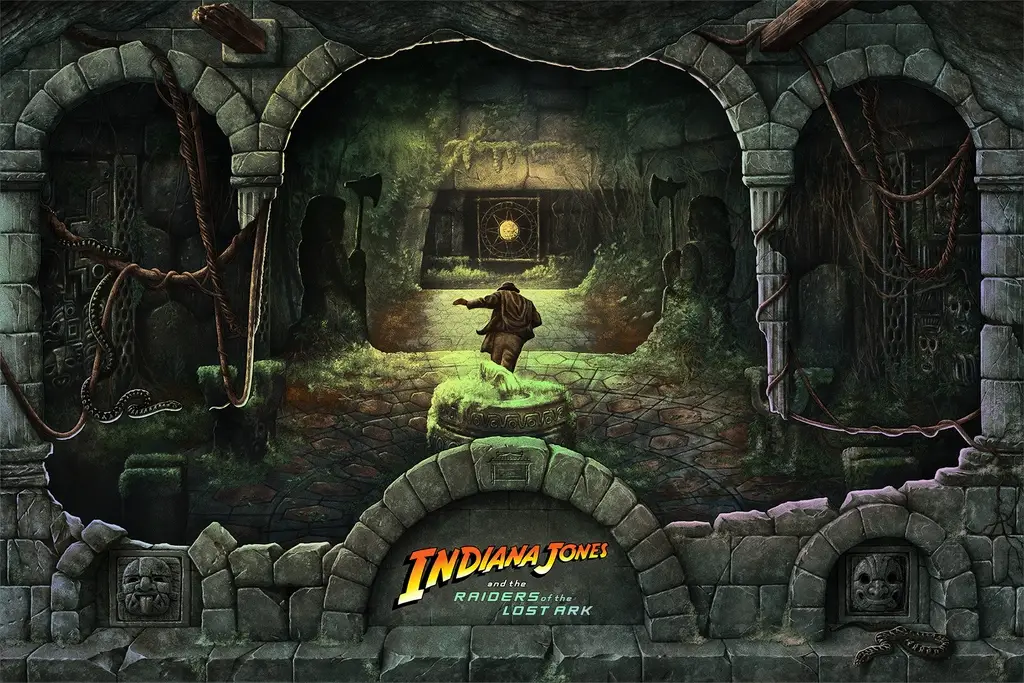Art Poster
The Dambusters Raid: Mission Accomplished 23 Rowland (TE) - Variant Edition
About this poster
Get To Know: Operation Chastise
In the small hours of the morning of 17 May 1943, Wing Commander Guy Gibson led 617 Squadron of the Royal Air Force on an audacious bombing raid to destroy three dams in the Ruhr Valley, the industrial heartland of Germany. The mission was codenamed ‘Operation Chastise’.
The dams were fiercely protected. Torpedo nets in the water protected against underwater attacks, while anti-aircraft guns defended them against enemy bombers.
To overcome these defenses, 617 Squadron had a secret weapon: the ‘bouncing bomb’.
The Target
The Allies developed a weapon capable of destroying several dams in Germany’s Ruhr Valley. It was thought that destroying these dams would cause massive disruption to German war production. In 1942, the newly developed weapon and aircraft took flight to deliver the bomb.
After extensive testing by the Admiralty and RAF at sites around the country, the bomb developed by British engineer Barnes Wallis was perfected. To skip across the water and hit its target, the bomb was drum-shaped, dropped from a height of 18 meters (60 feet) at a ground speed of 232 mph. It was also set to spin backward across the water on its way to the target. The residual spin would drive the bomb down the wall of the dam before exploding at its base.
The Aircrew
In late March 1943, a new squadron was formed to carry out the raid on the dams. Initially codenamed Squadron X, 617 Squadron was led by 24-year-old Wing Commander Guy Gibson and was made up of aircrew from Britain, Canada, Ireland, Australia, New Zealand, and the USA. The attack would require special skills because of the immediate exposure during the approach of the dams. With one month to go before the raid, the squadron began intensive training in low-level night flying and navigation.
The Raid
The three main targets were the Möhne, Eder, and Sorpe dams. From 9.28 pm on 16 May, 133 aircrew in 19 Lancasters took off in three waves to bomb the dams. Gibson was flying in the first wave, and his aircraft was first to attack the Möhne dam at 12.28 am; five aircraft had to drop their bombs before it was breached. The remaining aircraft attacked the Eder dam, which collapsed at 1:52 am. Meanwhile, aircraft from the two other waves bombed the Sorpe dam, but it remained intact.
The raid gave a significant morale boost to the people of Britain. However, there was a cost. Of the 133 aircrew that took part, 53 men were killed, and three became prisoners of war. On the ground, almost 1,300 people were killed in the resulting flooding.
Edition Details
- Class: Art Poster
- Release Date: 09/28/2023
- Print Type: Timed Edition (TE)
- Variant: Variant Edition
- Designer: Andrew Rowland
- Producer: Historiart
- Status: Licensed
- Technique: Fine Art Giclée
- Size: 23 39/100" x 16 27/50" (59.4 x 42 cm)
- License Holder: Imperial War Museums
- Original Price: £50.00 ($66.86)
- Markings: Artist Signed, Numbered
Art Details
Awards
Statistics
- Sold: 0
- 6 Month Average: $0
- Average Price: $0
- Lowest Price: $0
- Highest Price: $0
- Original Price: $67
 Price History
Price History
| 08/16/2021 | $350.00 | Private Sale |
| 08/16/2021 | $800.00 | Private Sale |
| 07/29/2021 | $75.00 | Private Sale |
| 07/27/2021 | $50.00 | Private Sale |
| 07/06/2021 | $70.00 | Private Sale |
| 08/16/2021 | $350.00 | Private Sale |
| 08/16/2021 | $800.00 | Private Sale |
| 07/29/2021 | $75.00 | Private Sale |
| 07/27/2021 | $50.00 | Private Sale |
| 07/06/2021 | $70.00 | Private Sale |
| 08/16/2021 | $350.00 | Private Sale |
| 08/16/2021 | $800.00 | Private Sale |
| 07/29/2021 | $75.00 | Private Sale |
| 07/27/2021 | $50.00 | Private Sale |
| 07/06/2021 | $70.00 | Private Sale |
Offers
Recommendations














Comments